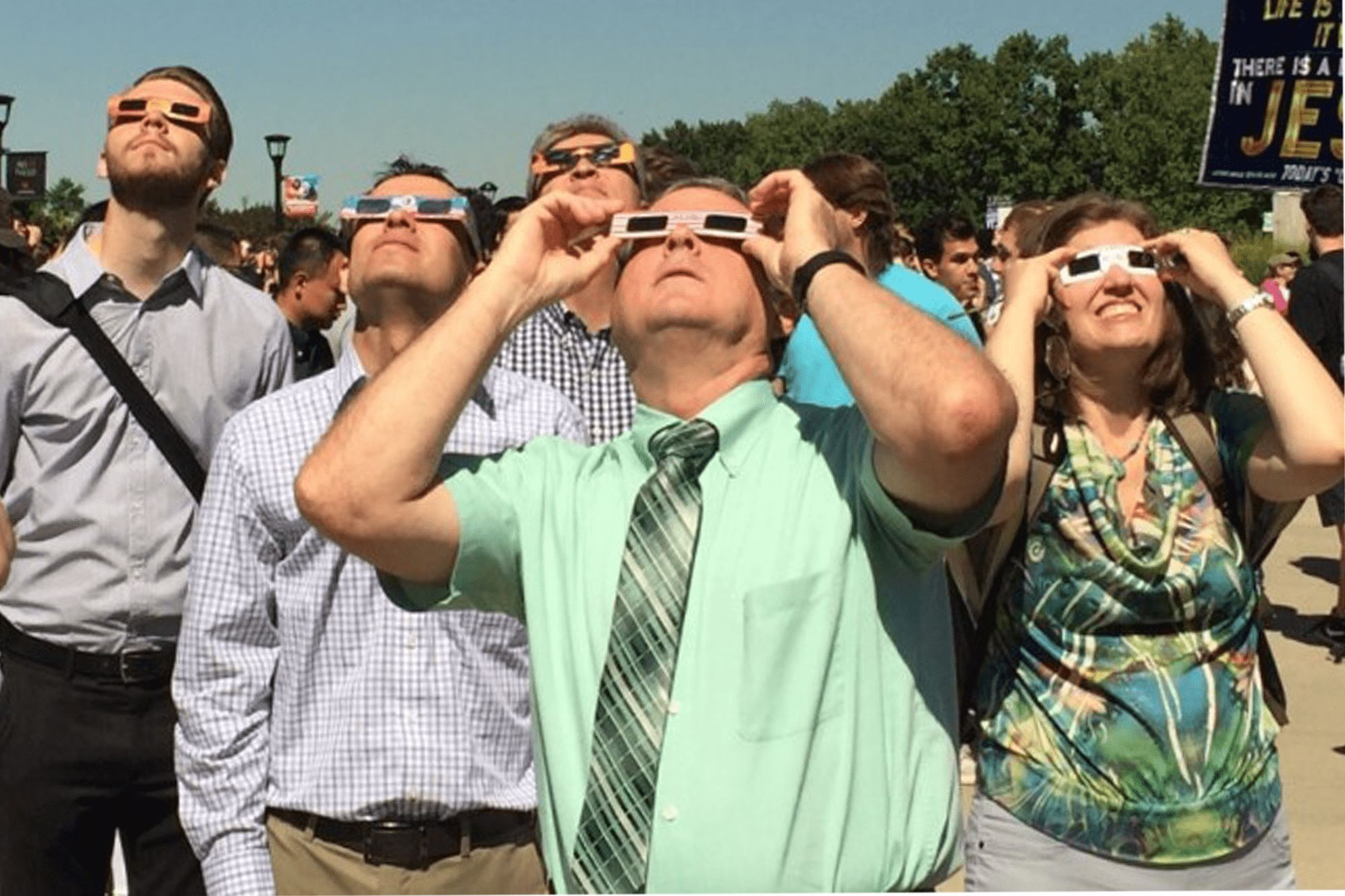
This page originally appeared on @THEU & CoS
“It’s like when you make a circle with your fingers and close oneeye. When you move your hand closer to your face, the circle gets bigger. “

This is what Paul Ricketts has to say about the upcoming eclipse on Saturday October 14. “This will be a cool event. You’ll still see the surroundings get darker, you’ll feel it get colder, but you won’t be able to look at the eclipse without protective glasses,” continued Ricketts, the director of the University of Utah’s South Physics Observatory. “Plus, this will last way longer than the total eclipse.”
This is a front row seat for Utahns to an annular eclipse the morning of the 14th. The so-called ring-of-fire eclipse is different than the total eclipse of 2017 but will still be spectacular.
A solar eclipse occurs when the moon’s orbit moves between the sun and the earth so that it blocks out the sun’s light and casts a shadow on Earth’s surface. During an annular eclipse, the moon is at a farther distance from the Earth. The distance makes the moon appear smaller, and it fails to block out the entire sun. The moon looks like a large black disk in front of the bright sun disk. This results in a ‘ring of fire’ around the moon’s silhouette.
Every year the moon drifts slowly farther away from the Earth—around one inch farther per year. Ricketts said that’s one reason to take advantage of these astronomical events while you can.
“Right now, our Earth position with the moon and the sun, they appear the same size in the sky, which is why we can enjoy total eclipses. A few billion years down the road, the moon will appear too small and we’d only get these types of annular eclipses.” Ricketts said. “We’re lucky to be alive right now. In the future, we’d only able to see annular eclipses that look like a much smaller black dot crossing the sun’s surface.”
While many will enjoy viewing the solar spectacle, the event is sacred to local Indigenous tribes. For some Indigenous tribes, an eclipse is a time of renewal and reflection through cultural practices that include fasting and meditation. Diné (Navajo) and Ute Indian Tribes do not watch, or even look at images of the eclipse. When posting images on social media, be mindful of people who want to avoid such images. Consider using a filter so your followers can opt-in to view any multimedia of the eclipse.
Learn how to see the eclipse by reading the rest of the story by Lisa Poster on @TheU.
